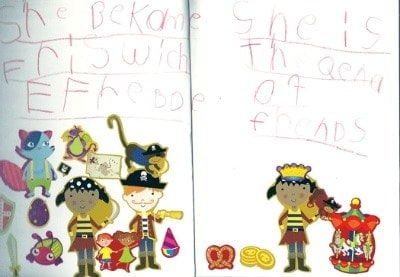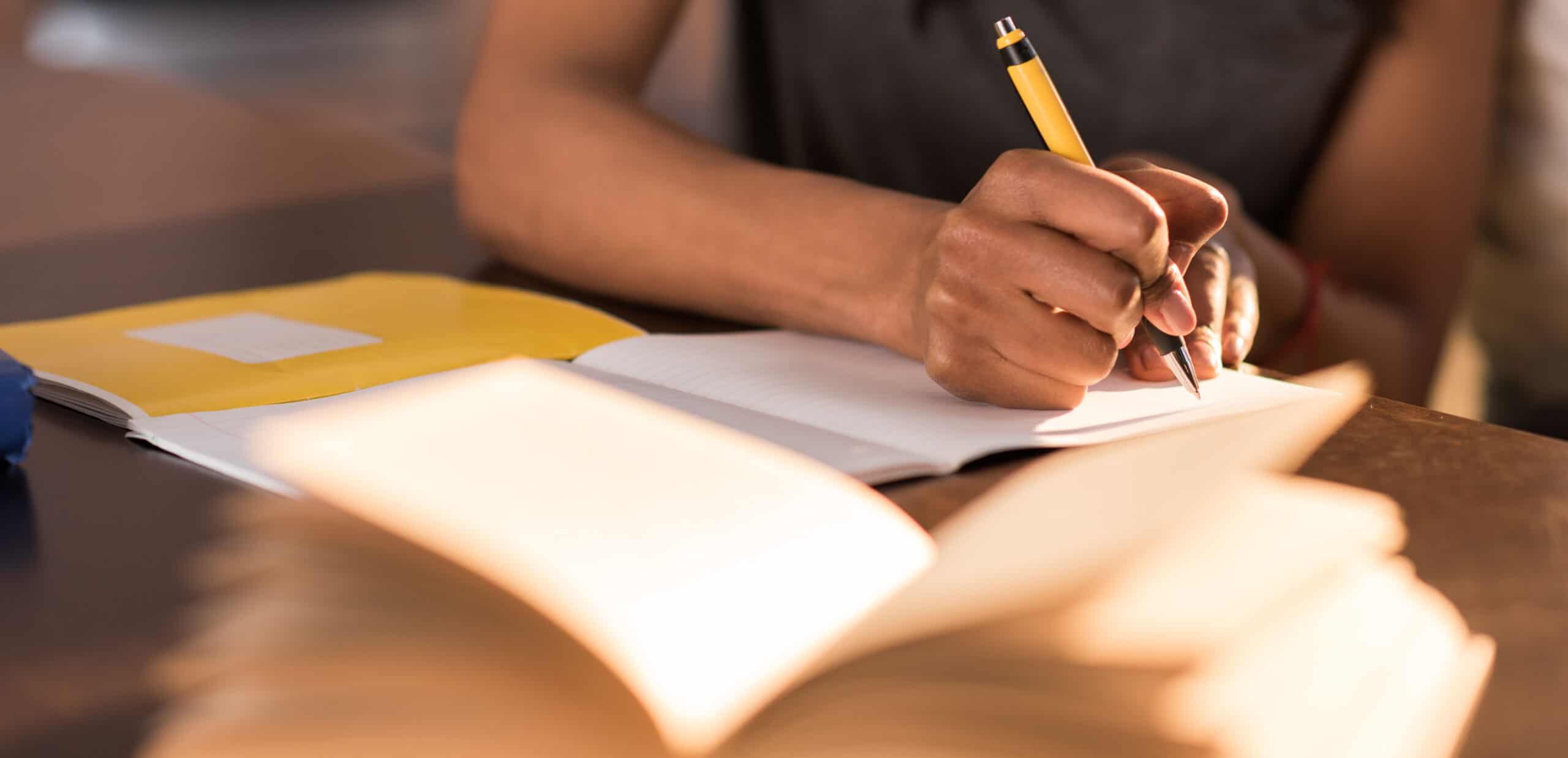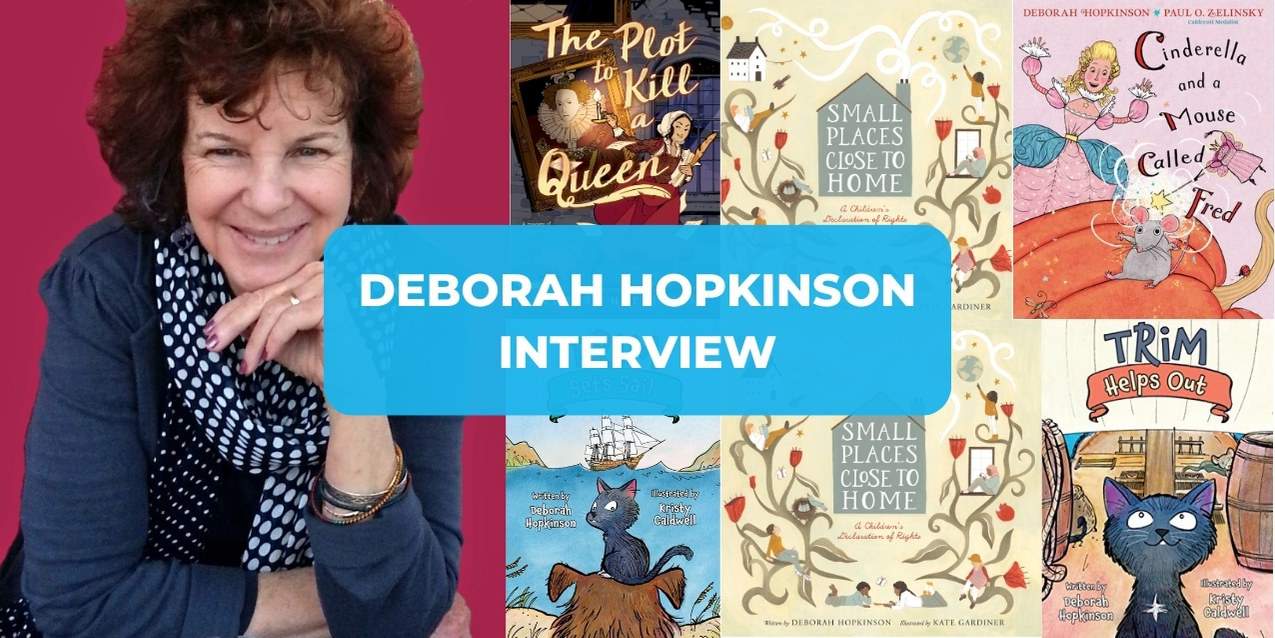22 Good Compare and Contrast Examples in Picture Books
This post may contain affiliate links.
Teach kids to compare and contrast is an important thinking skill for young learners so they can determine categories and classifications by considering what’s similar and what’s different. That’s why I’m going to share the best mentor text children’s books with compare and contrast examples to read aloud with children. You’ll want to start early–long before your children are writing contrast essays in high school with thesis statements and fully developed arguments. Comparing and contrasting is an essential skill!
What is the definition of compare and contrast?
What does compare and contrast mean? Comparing the similarities and differences between two or more things or concepts is comparison and contrast.
Use these picture books as mentor text examples and models to compare and contrast thinking in preschool, elementary, or even middle school, teaching Venn Diagrams, or introducing basic writing compare/contrast text structure which features similarities and differences between two different topics or subjects.
Compare and Contrast Thinking Maps
For younger students, start with a Venn Diagram.
To support kids with the compare and contrast thinking strategy, take notes using a thinking map such as the double bubble map.
If you’re using the notes to write a compare and contrast essay, help students to use the block method to write paragraphs that discuss similarities in one paragraph and contrasts in another paragraph, or more. The thesis statement should be a general statement of what you’re comparing and contrasting and what the overarching similarities and differences are.
Compare and Contrast Questions
As you compare and contrast, guide students to deepen their thinking with these questions.
- What is the author comparing and contrasting? (Go point by point.)
- How are these things (ideas) similar? How are they different?
- Are there more similarities or more differences or is it the same?
- Do the authors use transition words to indicate a comparison?
You can even compare and contrast children’s books by the same author, style of illustration, style of writing, or two different characters. In fact, there are many possibilities if you want to drill down into even more specific literary elements or writing techniques.
In this list, you’ll discover picture books that include comparisons or that lend themselves to thinking about similarities and differences.
However, before you read, start by practicing with other compare and contrast examples. Here are some things you can compare and contrast for practice:
- Fruits
- Cereals
- Cars
- Animals or animals and humans
- Shoes

What are compare and contrast transition words?
- alike
- compared with
- either/or
- similarly
- as opposed to
- different
- both
- same
- in common
- also
- while
- but
Compare and Contrast Examples in Picture Books


Goodbye Winter, Hello Spring by Kenard Pak
Evocative text and gorgeous illustrations show a boy and his dog first standing in the dark of a snowy winter day and then walking in nature, noticing small signs of spring such as the chirping of birds and the melting brook.
 An Ordinary Day written by Elana K. Arnold, illustrated by Elizabet Vukovic
An Ordinary Day written by Elana K. Arnold, illustrated by Elizabet Vukovic
On the same street, in two different homes, two different doctors arrive. One doctor is for people and one is for animals. One situation is life — a new baby, while the other is death — the passing of a beloved pet. Parallel stories told in an alternating method with important themes will give readers much to discuss.

This Baby. That Baby written by Cari Best, illustrated by Rashin Kheiriyeh
Two babies in two different apartments go about their day — and this adorable story shows exactly what this baby and that baby do during the day. They play and read and look out the window. They nap or don’t nap, eat and drink. Finally, they walk to the park. Not only is this day-in-the-life cute, but it’s also sweet and fun.

Birds of a Feather Bowerbirds and Me by Susan L. Roth
Beautiful collage illustrations illustrate these fascinating comparisons between a collage artist and a bowerbird who have more in common than you might think. It’s very out-of-the-box thinking which you will love. Use this brilliant book for teaching kids about making art with found objects as well as comparing and contrasting similarities and differences.

Tiny Dino by Deborah Freedman
Learn all about the characteristics of dinosaurs as you compare the little bird’s many features to those of a dinosaur. The plot is clever and the dialogue between the animals is engaging.

Up in the Garden and Down in the Dirt written by Kate Messner, illustrated by Christopher Silas Neal
See what’s happening above and below ground as a little girl and her grandmother work in the garden from the beginning of the spring planting season until autumn gives way to cold snow. It’s an oversized book with marvelous illustrations and juicy descriptions. Beautiful!
 Moth & Butterfly written by Dev Petty, illustrated by Ana Aranda
Moth & Butterfly written by Dev Petty, illustrated by Ana Aranda
Two good caterpillar friends with a lot in common go through the amazing process of metamorphosis. Then they pop out of their cocoons– one, a butterfly, and the other, a moth. Now they have new differences. Butterfly’s wings are colorful and Moth’s are beige. Butterfly flies during the day and Moth flies at night. Even still, some things are still the same — they still have cool moves and their friendship.
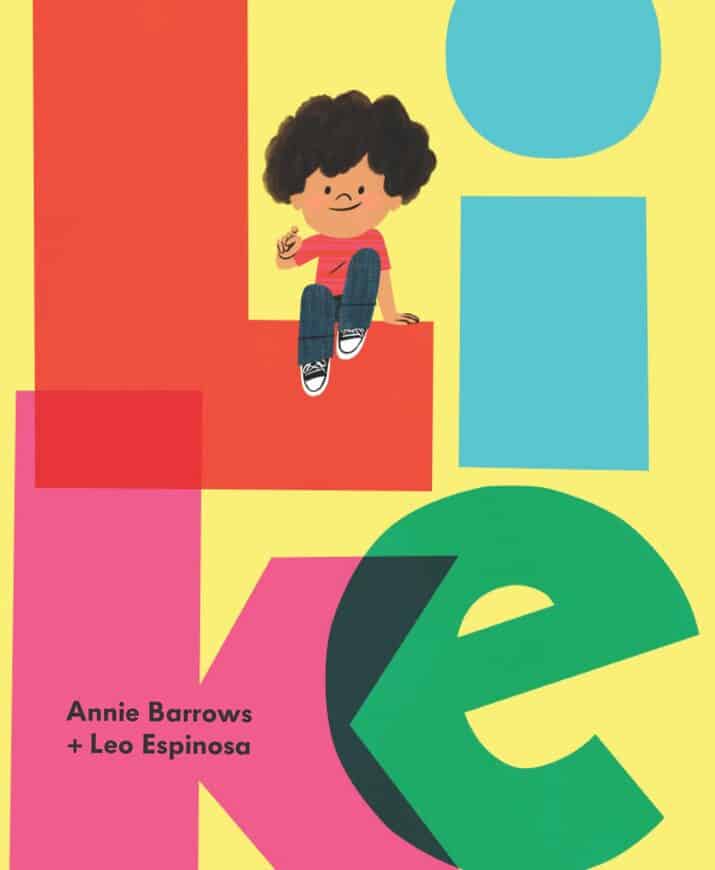 Like by Annie Barrows and Leo Espinosa
Like by Annie Barrows and Leo Espinosa
Clever, surprising, delightful! Also, informative, playful, and funny! LIKE will be a new read-aloud favorite for its humor and thoughtful discussion-provoking text! Reading the first page, I thought I could predict the rest of the story. I was wrong. And I’m so glad! This silly book compares humans to other things. Can you guess what? TIN CANS! And SWIMMING POOLS and MUSHROOMS.
 Amara’s Farm written by JaNay Brown-Wood, illustrated by Samara Hardy
Amara’s Farm written by JaNay Brown-Wood, illustrated by Samara Hardy
Learn about pumpkins with Amara who needs to harvest pumpkins. As she searches the farm, we learn about the features of pumpkins with our own search and find and compare and contrast. For example, “A pumpkin is large and round. Is that a pumpkin? // No. That’s an apple. An apple is round, but not large like a pumpkin.” A good book to read aloud for fall harvest season.

Goodbye, Friend! Hello, Friend! by Cori Doerrfeld
These best friends show us how to say goodbye and hello. In fact, every goodbye leads to a hello. For example, saying goodbye to Mom at the bus stop leads to saying hello to a new friend at school. “Goodbye to snowman…/…is hello to puddles!” Sweet example after example captured in tender, charming illustrations reassures kids that endings can lead to wonderful new beginnings.

So Big and So Small written by John Coy, illustrated by Steph Lew
A little boy explores size as he compares himself (so big, even gigantic) to different things like a pebble or a butterfly then so small when he compares himself to animals at the zoo and so tiny compared to a waterfall or mountain. “I’m just right,” sums up his thinking as he plays with his baby sister.
 King Kong’s Cousin by Mark Teague
King Kong’s Cousin by Mark Teague
Junior compares himself to his cousin Kong– and he doesn’t measure up in his size or his actions. For example, Kong climbs skyscrapers while Junior climbs the piano bench. But, when Junior saves his kitty stuck in a tree, Junior feels happy and a little bit bigger. Funny and sweet.

Poo-Dunit? A Forest Floor Mystery written by Katelyn Aronson, illustrated by Stephanie Laberis
One morning, Mouse finds a huge poo outside her house — and she decides to investigate to find out who pooed it. Mouse asks the forest friends if it’s theirs but they each explain why their poo is different in DETAIL (gross and informative!) until they finally discover who did it. But then they have to get it out of Mouse’s way — and the mice work together to spread it as fertilizer for flowers.

Anni Dreams of Biryani written by Namita Moolani Mehra, illustrated by Chaaya Prabhat
Anni enters a determined quest to find the ingredients to make the best biryani just like Uncle makes in the cafe across the street. This is a delicious story filled with dreams, culture, perseverance, and food.
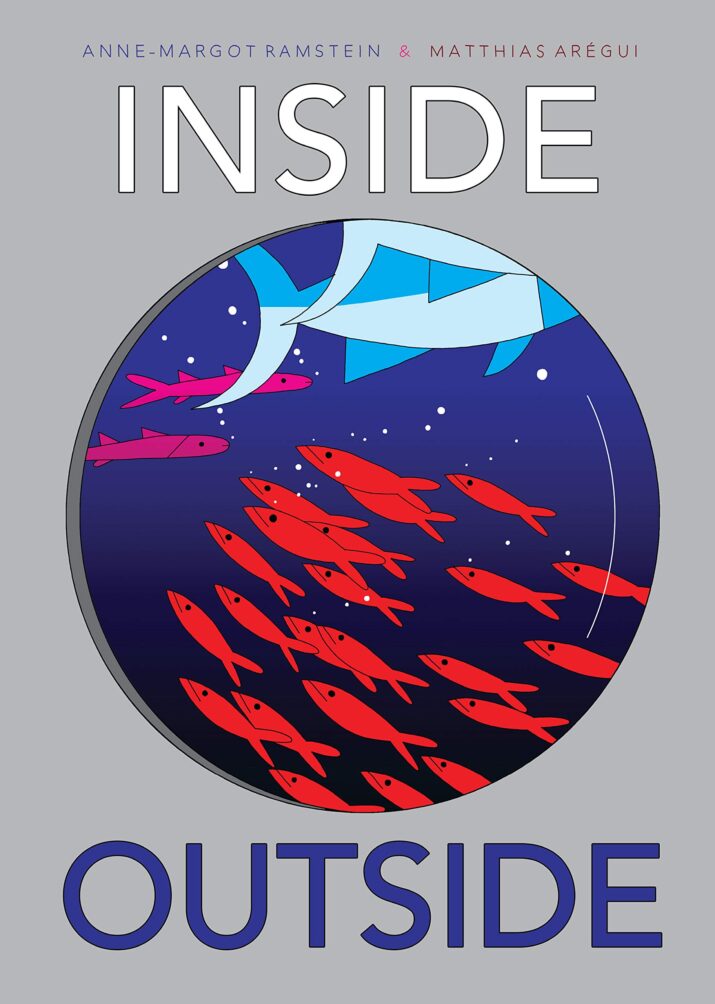
Inside Outside by Anne-Margot Ramstein and Matthias Aregui
Gorgeous, oversized illustrations with no text are meant to show readers the inside and outside of something — things like inside an anthill (ants) and outside the anthill (anteater waiting.) Inside an apple is a worm on one page. The next page is a bigger perspective showing a lady about to take a bite out of the apple. Some of the illustrations aren’t perfectly clear so this book begs thoughtful inference and discussion. It’s quite profound.

It’s Not Jack and the Beanstalk written by Josh Funk, illustrated by Edwardian Taylor
On every page, the narrator of this hilarious story interrupts narration to boss Jack around. Of which Jack isn’t a fan because he doesn’t really want to be a thief and murderer. His dialogue with the narrator will crack you up. Finally, at the giant’s house in the sky, Jack changes everything. He befriends the giant, makes him a taco salad, and goes to Cinderella’s house for a party. It’s the perfect updated version of Jack and the Beanstalk with a take-charge hero and curmudgeonly narrator. Use this picture book to compare the two different voices.

A New Home by Tania de Regil
Parallel stories show a little girl and a little boy who are nervous about moving, one is moving from Mexico City to New York City, and the other is moving from New York City to Mexico City. They each share the fun things they’ll miss about their home. As they do, we notice how fun each city is and feel reassured that they’ll probably love their new, fun home. Simple, clear text accompanies charming illustrations.

Wagons Ho! written by George Hallowell and Joan Holub, illustrated by Lynne Avril
Side by side stories in diary and scrapbook form share two girls’ experiences, both of who are moving from Missouri to the West. One story takes place in 1846, the other, in the present day. It’s a fascinating comparison of what is the same and what is different from each girl’s different setting.

I Will Fight Monsters for You written by Santi Balmes, illustrates by Lyona
This clever parallel story is of a young girl (and a young monster) who are both frightened to sleep because of the upside-down world of monsters (and humans) beneath (above) their beds. Luckily, dads will fight monsters for their kids, and they give good advice: “the size of the monsters depends on how scared you are. If you feel very brave, the monster will shrink and run away.” Creative, reassuring, and heart-warming!

Lovely by Jess Hong
Striking illustrations show “lovely” people who are different, short, tall, simple, complex, fluffy, sleek, and more. Use this book to teach adjectives, opposites, and appreciation for diversity.

When the Shadbush Blooms by Carla Messinger with Susan Katz, illustrated by David Kanietakeron Fadden
Compare and contrast past and present cultural traditions and values of the Lenni Lenape. See both past and present-day families planting corn, playing games, harvesting crops, telling stories, and more. Learn the Lenape words for different seasons and moon cycles for significant aspects of nature. Several pages of back matter explain the words and their meanings.

Up and Down Mom by Summer Macon
This little girl lovingly discusses her mom’s days in bed contrasted with her mom’s days of excitement. She shares that she feels many different feelings — and how she stays with her granddad or friends when her mom has to go to the hospital. I’m impressed with how much about bipolar disorder that this book covers in kid-friendly, relatable language.

Miguel’s Community Garden by JaNay Brown-Wood, illustrated by Samara Hardy
Explore the garden with Miguel in this interactive story while he searches for a sunflower. As you search, compare what you know about sunflowers with the other plants in the garden. Finally, you find a tall flower with yellow petals, a round center, smooth green, and pointy leaves — you’ve found the sunflower! This is a delightful, educational introduction to plants in a garden with compare and contrast thinking.

KEEP READING:
How to Use Colors to Improve Learning
All Mentor Text Book Lists for Reading & Writing Instruction




